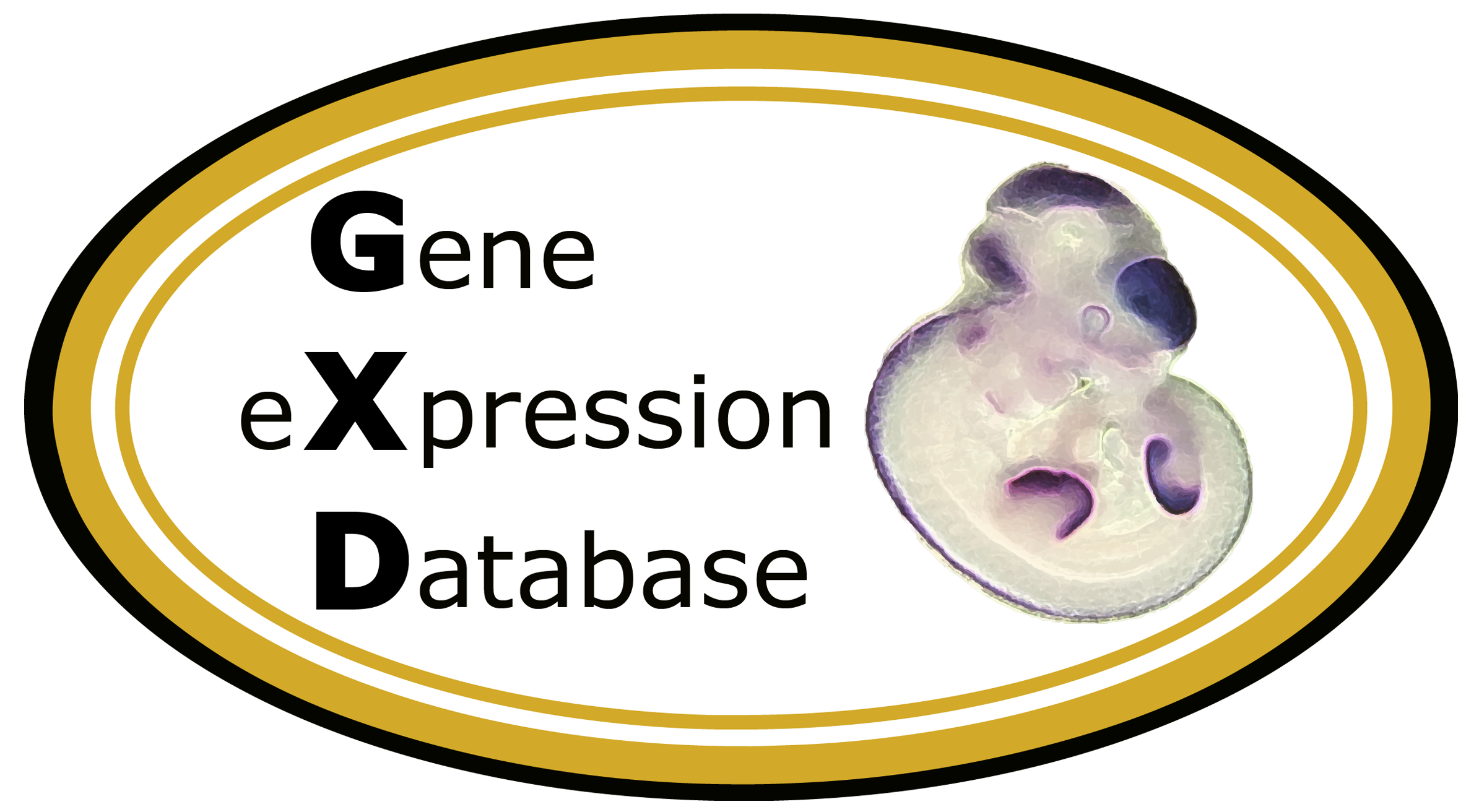Gene Expression Data
Assay Details
|
Assay
|
|
Reference:
|
J:56622
Sarkar L, et al., Expression of Wnt signalling pathway genes during tooth development. Mech Dev. 1999 Jul;85(1-2):197-200
|
|
Assay type:
|
RNA in situ
|
|
MGI Accession ID:
|
MGI:5433728
|
|
Gene symbol:
|
Wnt10b
|
|
Gene name:
|
wingless-type MMTV integration site family, member 10B
|
|
Probe:
|
Wnt10b probe6
|
|
Probe preparation:
|
Antisense labelled with S35 RNA
|
|
|
Results
|
Specimen
2E:
embryonic day 11.5
(more  ) )
Specimen
2E:
(close  ) )
|
Genetic Background:
|
Not Specified
|
|
Age:
|
embryonic day 11.5
|
|
Sex:
|
Not Specified
|
|
Type:
|
section
|
|
Fixation:
|
Paraformaldehyde
|
|
Embedding:
|
Paraffin
|
Specimen
2K:
embryonic day 13.5
(more  ) )
Specimen
2K:
(close  ) )
|
Genetic Background:
|
Not Specified
|
|
Age:
|
embryonic day 13.5
|
|
Sex:
|
Not Specified
|
|
Type:
|
section
|
|
Fixation:
|
Paraformaldehyde
|
|
Embedding:
|
Paraffin
|
| Structure |
Level |
Pattern |
Image |
Note |
| TS21: molar epithelium |
Strong |
Regionally restricted |
2K
|
Strong localised expression was detected in the tip of the budding epithelium.
|
Specimen
2Q:
embryonic day 14.5
(more  ) )
Specimen
2Q:
(close  ) )
|
Genetic Background:
|
Not Specified
|
|
Age:
|
embryonic day 14.5
|
|
Sex:
|
Not Specified
|
|
Type:
|
section
|
|
Fixation:
|
Paraformaldehyde
|
|
Embedding:
|
Paraffin
|
| Structure |
Level |
Pattern |
Image |
Note |
| TS22: molar epithelium |
Present |
Regionally restricted |
2Q
|
Expression was detected in the external enamel epithelium (outer dental epithelium) with strongest expression in the enamel knots and weaker expression throughout the remaining dental epithelium.
|
| TS22: enamel knot |
Present |
|
2Q
|
Expression was strongest in the enamel knots.
|
Specimen
2W:
embryonic day 15.5
(more  ) )
Specimen
2W:
(close  ) )
|
Genetic Background:
|
Not Specified
|
|
Age:
|
embryonic day 15.5
|
|
Sex:
|
Not Specified
|
|
Type:
|
section
|
|
Fixation:
|
Paraformaldehyde
|
|
Embedding:
|
Paraffin
|
| Structure |
Level |
Pattern |
Image |
Note |
| TS23: molar enamel organ |
Present |
Regionally restricted |
2W
|
Expression was restricted to the internal enamel epithelium and absent from external enamel epithelium cells.
|
|
 Analysis Tools
Analysis Tools



 )
)
 )
)
